Quick Answers
What’s the difference? “Substance use” simply means any consumption of alcohol, prescription meds, over‑the‑counter drugs, or illegal substances – even a single sip of wine counts. “Substance abuse” is a pattern of use that starts to cause real harm: health problems, strained relationships, trouble at work or school, or legal issues. When that pattern meets clinical criteria, it’s called a substance use disorder (SUD).
Why does it matter? Spotting the line between casual use and abusive use helps you (or someone you love) recognize early warning signs, grab help before the situation spirals, and keep life on a healthier track.
Core Definitions
Substance Use
Think of this as the umbrella term. It covers everything from a teenager’s first beer at a party to an adult taking an analgesic for a headache. The act itself isn’t good or bad – it’s neutral until context, frequency, and consequences come into play.
Substance Abuse
When the same act starts to interfere with daily life, we call it abuse. According to MedicineNet’s substance abuse definition, abuse involves “excessive use… that causes problems in health, relationships, work, or the law.” It’s the point where enjoyment turns into risk.
Substance Use Disorder (SUD)
The Diagnostic and Statistical Manual of Mental Disorders (DSM‑5) replaced the old “substance abuse” label with “substance‑use disorder.” SUD is diagnosed when at least two of the following appear: impaired control, social impairment, risky use, or pharmacological signs (tolerance, withdrawal). Verywell Mind explains that SUD can be mild, moderate, or severe.
Addiction / Dependence
Addiction is the severe end of the continuum. It adds compulsive cravings and a loss of control to the picture. Dependence refers mainly to physical adaptation – you need the substance to feel “normal” and experience withdrawal when you stop.
When Use Becomes Abuse
Frequency & Quantity
There’s no universal “one‑drink‑is‑too‑much” rule because genetics, body weight, metabolism, and tolerance all vary. However, public‑health guidelines give us a ballpark: for alcohol, the CDC advises up to one drink per day for women and two for men. Crossing those limits regularly bumps you toward risky use.
Functional Impact
Ask yourself: Is my substance use interfering with my job, school, or relationships? If the answer is “yes,” you’re likely in the abuse zone. Health effects can be serious – liver disease, cognitive decline, or overdose. Crozer Health notes that “substance abuse can lead to substance use disorder, a mental disorder characterized by an inability to control the urge to use” according to. Social repercussions—missed deadlines, DUI arrests, or family arguments—are also tell‑tale signs.
Psychological Triggers
People often turn to substances to cope with stress, anxiety, or trauma. The Canadian Mental Health Association reminds us that “substance use is a problem when it causes problems for you or others” and that the reason behind use strongly influences risk according to. When the substance becomes a primary coping tool, the likelihood of sliding into abuse rises sharply.
Age & Development
For teens and young adults whose brains are still wiring, any drug or alcohol use is risky. The Delphi Health Group highlights that “substance use becomes substance abuse when the recurrent use … causes clinically and functionally significant impairment” according to. Adults have more flexibility, but personal history and family genetics still matter.
Substance‑Specific Nuances
Not all substances behave the same way. Below is a quick snapshot that helps you see where each one sits on the use‑to‑abuse spectrum.
| Substance | Typical Everyday Use | Red‑Flag Signs of Abuse | When to Seek Professional Help |
|---|---|---|---|
| Alcohol | One glass of wine with dinner | Daily bingeing, blackouts, hangovers that affect work | When you need a drink to unwind every night or lose control over quantity |
| Prescription Opioids | Pain medication after surgery, as directed | Taking higher doses, using without a prescription, craving | Any use outside a doctor’s orders or escalating tolerance |
| Cannabis | Occasional joint at a social gathering | Daily use, neglecting responsibilities, using to cope with stress | When you feel unable to cut back despite negative impacts |
| Stimulants (cocaine, meth) | Rarely, if ever | Repeated high‑risk binges, paranoia, severe sleep disruption | Immediately – these drugs carry high addiction potential |
| OTC & “Everyday” (caffeine, nicotine) | Cup of coffee, occasional nicotine patch | Excessive caffeine (10+ cups), smoking to the point of health decline | When consumption interferes with sleep, anxiety, or finances |
Early Warning Signs
Physical Clues
Noticeable tolerance (needing more to feel the same effect), withdrawal symptoms (shakes, nausea, insomnia), unexplained weight loss, or frequent illnesses can all hint at abuse.
Behavioral Clues
Secretive behavior, lying about where you’ve been, missed appointments, or a sudden drop in work/school performance are red flags.
Emotional Clues
Rapid mood swings, irritability when you can’t use, or a pervasive sense of anxiety or depression often accompany abusive patterns.
Social / Environmental Clues
Changes in friend circles (spending more time with users), financial strain, or legal trouble (DUIs, possession charges) signal that the line has been crossed.
Screening Tools
Quick questionnaires like the AUDIT‑C for alcohol or the DAST‑10 for drugs are free, validated ways to gauge risk. The Substance Abuse and Mental Health Services Administration (SAMHSA) offers these tools online, and they’re a great first step before you talk to a professional.
Getting Help
Start the Conversation
Reach out to someone you trust – a friend, family member, or coworker. Even saying “I’m worried about my drinking” can shift the momentum toward change.
Primary‑Care & Tele‑Health
Your family doctor can screen for SUD, order labs, and refer you to specialists. Many clinics now offer virtual appointments, making the first step less intimidating.
Evidence‑Based Treatments
Therapies such as Cognitive‑Behavioral Therapy (CBT), Medication‑Assisted Treatment (MAT) for opioids, and structured 12‑step programs have strong research backing. The National Institute on Drug Abuse (NIDA) emphasizes that a combination of medication and counseling yields the best outcomes.
Community & Crisis Resources
Hotlines (e.g., 988 in the U.S.), local support groups, and online forums provide immediate help and a sense of belonging. If you ever feel unsafe or think you might overdose, call emergency services right away.
Recovery After Treatment
Recovery isn’t a single event; it’s a lifelong journey. Building a relapse‑prevention plan—identifying triggers, establishing new hobbies, and maintaining regular therapy—keeps you on track.
Bottom‑Line Takeaways
In a nutshell, “substance use” is a neutral description of any consumption, while “substance abuse” signals harmful patterns that jeopardize health, relationships, and daily functioning. When those patterns meet clinical criteria, you’re looking at a substance‑use disorder, the medical term that replaces the outdated “substance abuse” label. Recognising the tipping point early—through physical, behavioral, emotional, and social clues—gives you a powerful advantage: you can seek help before addiction takes deeper hold.
If any of the signs above feel familiar, take a moment right now to jot down what’s been happening and consider sharing it with a trusted person or a healthcare professional. You don’t have to navigate this alone, and the right support can turn a risky habit into a manageable part of life—or help you move beyond it entirely.
We’d love to hear from you. What’s your experience with substance use or abuse? Have you found a strategy that helped you draw healthy boundaries? Drop a comment, share your story, or ask a question—your voice might be the spark someone else needs.


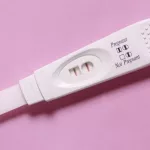


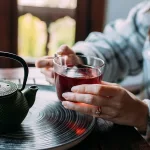


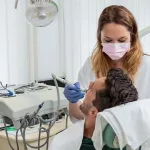
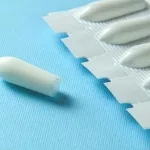
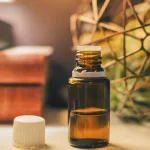
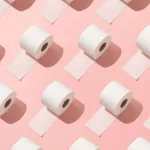






Leave a Reply
You must be logged in to post a comment.